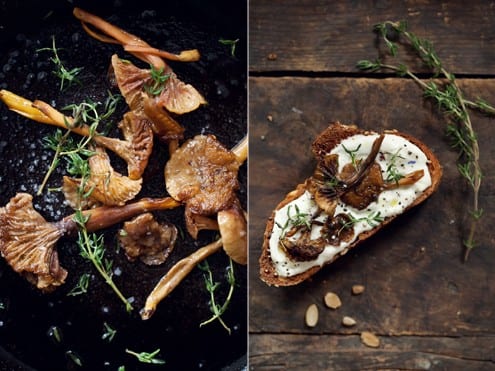Making delectable homemade ricotta is easy, and it puts the store-bought variety to shame.
By Ilene Ross – Photos by Gina Weathersby/Kiwi Street Studios
Although often referred to as a cheese, Ricotta (derived from the Latin word “recocta” meaning “cooked twice”) is an Italian dairy product typically made up from milk whey left over from the production of provolone or mozzarella cheese. As there is no coagulation of casein in the process of ricotta, it is not considered a proper cheese itself. Historians speculate that Ricotta was first produced in Rome or Sicily in the second century B.C.E., based on its appearance in documents by the Greek author Athenaeus, who wrote a great deal about food in the second and third centuries B.C.E. In Italy, Ricotta is made from the milk of sheep, goats, or buffalo, while in the United States it is most often made of cow’s milk.
Ricotta has a smooth, creamy consistency, and can be used in either savory or sweet dishes. In its fresh, soft form, it’s popular as a stuffing for pastas such as ravioli, manicotti, and lasagna, and a superb focaccia topper in place of the more traditional mozzarella. When beaten smooth and mixed with sugar and additions such as chocolate or nuts, it is a decadently rich filling piped into cannoli shells for dessert. It can also be combined with eggs, cooked wheat, and citrus, and then baked into the hearty Neapolitan Easter pie known as Pastiera. Ricotta’s versatility means it’s a perfect base for bruschetta. Its subtle nature makes it the perfect foil for the more pungent flavors of roasted garlic, herbs, vegetables, and even honey for a delightful twist on dessert.
Techniques to combat Ricotta’s particularly short shelf life are worthwhile and particularly delectable. Ricotta Salata is produced when the Ricotta is pressed, salted, dried, and aged. It becomes firm in texture and crumbly, perfect for grating over salads, and pizza. Place a large lump of soft, fresh Ricotta in the oven until it develops a slightly charred crust, and you have Ricotta al Forno. Ricotta Affumicata is similar to Ricotta al Forno, except that it is smoked with wood, juniper, and herbs. Either of these is a rich, mellow addition to pasta.
PrintHomemade Ricotta
- Yield: 1 cup 1x
Description
Ingredients
- 6 cups full cream milk (not ultra pasteurized)
- 2T white vinegar
- 1tsp. fresh lemon juice
Instructions
- Place the milk and a candy thermometer in a saucepan over medium heat and heat to 176 degrees Fahrenheit.
- Remove from the heat and stir in the vinegar and lemon juice; allow to sit for 5 minutes or until curds form.
- Line a colander with three layers of clean cheese cloth and place over a deep bowl.
- Use a slotted spoon to carefully spoon the curds into the colander leaving as much of the whey behind as possible. Don’t rush as to not break up the curds too much or cheese will become dry and grainy. Allow to drain for 5 minutes.
- Gather the ends of the cheese cloth and tie around a wooden spoon. Suspend over the colander and bowl for more drainage; 1/2 to 1 hour depending on the thickness of ricotta desired.
- Spoon the ricotta into a glass or ceramic dish and loosely cover with plastic wrap. Store in refrigerator up to one week.
Notes
Recipe adapted by Gina Weathersby from Donna Hay


























Cheese making heaven!